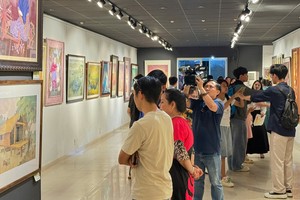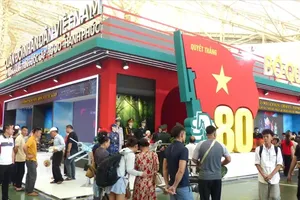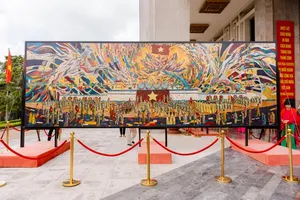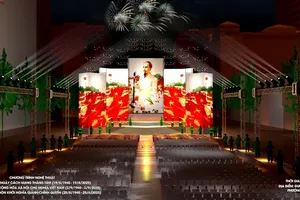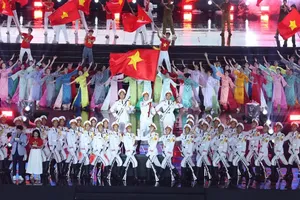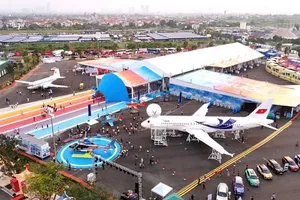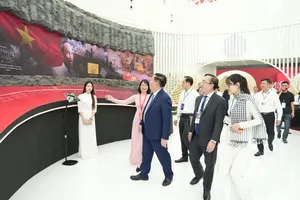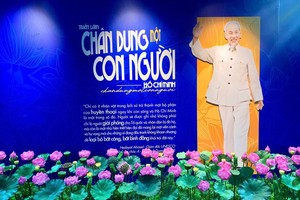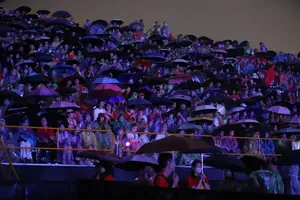The cinematic buzz of HIFF seems to be finding a permanent home along the 'city that never sleeps' dynamic waterfront.
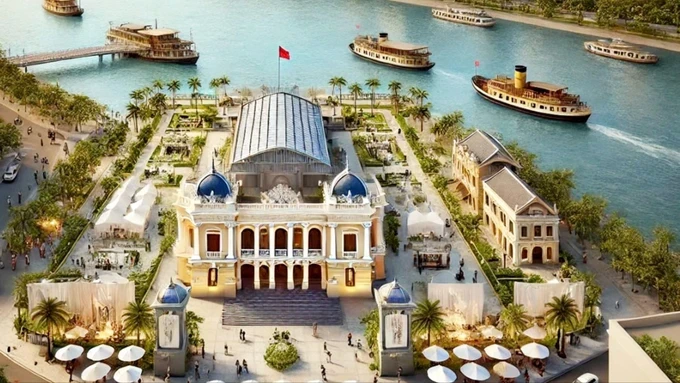
HIFF 2024 has demonstrated its allure when film exhibitions, dialogues, and open-air artistic performances captivated multitudes of spectators. Numerous individuals experienced for the first time everything from Vietnamese masterpieces to international blockbusters on expansive screens, in unenclosed venues, in synchrony with nature and the refreshing gusts from the Saigon River.
Spectators observed with complete absorption, exhilaration abundant. That tableau also evoked for multiple generations memories of viewing cinema amidst the combat and projectiles of conflict on vessels in battle zones or itinerant film presentations on vacant terrain.
Regrettably, when HIFF concluded, this endeavor also ceased, leaving lingering nostalgia for a communal environment where inhabitants could exist completely in a sumptuous artistic ambiance.
Ho Chi Minh City - a city by the river, closely linked to the life of enjoying culture and tourism with rivers: Nha Rong - Khanh Hoi in District 4, Bach Dang Park, Ba Son Bridge in District 1, Nhieu Loc - Thi Nghe Canal in District 3, Lan Anh Cruise Terminal in Thu Duc City, Viet Star Terminal in District 7, Binh Dong Terminal in District 8. River festivals and spring flower festivals are becoming increasingly integrated with the city's ongoing development.
Ho Chi Minh City's cinema inherits a proud tradition of revolutionary filmmaking that began at sea in 1947. In those early days, pioneering filmmakers rowed dozens of kilometers to obtain the materials needed to print and develop film, completing the entire process in makeshift darkrooms aboard boats. This historical connection underscores how cinema in the South—and in Ho Chi Minh City in particular—has always been deeply intertwined with the waterways. Just as small rivers flow into the ocean, the city’s cinema continues to merge with the broader currents of the global filmmaking.
At a seminar on the Saigon–Dong Nai Riverside Planning held in mid-March 2025, a joint venture proposed the development of Thu Thiem Cinema Park. The project is planned for a five-hectare site along the Saigon River, stretching from the Thu Thiem Tunnel to Can Bridge. It will feature multiple functional zones equipped with comprehensive infrastructure to support a high-quality film industry. If approved, the project will bring to life the vision of a 'riverside cinema city'—a cultural and touristic landmark that bridges past and future, and adds a distinctive identity to the southern largest city.
In early March, Ho Chi Minh City submitted its application to join the UNESCO Creative Cities Network (UCCN). If recognized by the end of October, the southern metropolis will become the first film city in Vietnam and Southeast Asia. Choosing the film industry is the right decision but also poses many challenges for itself.
Secretary General of the Vietnam National Commission for UNESCO, Director of the Department of Cultural Diplomacy and UNESCO Vietnam Le Thi Hong Van said that out of 350 creative cities of UNESCO, there are only 26 film cities, accounting for 7 percent , much lower than other fields. That means the city is entering a very difficult area.
Audiovisual Attaché for Southeast Asia at the French Embassy in Vietnam Jeremy Segay emphasized that Ho Chi Minh City is the development center of Vietnamese cinema, the gateway for foreign film crews to enter Vietnam, where equipment rental companies are headquartered.
To attain recognition is not a straightforward achievement, but what becomes of a designation after acknowledgment? - This remains the preoccupation of both strategic visionaries and pragmatic filmmakers. Indeed, Ho Chi Minh City's cinematic landscape is flourishing robustly with 935 enterprises, 9,294 personnel, generating revenue of US$500 million approximately 40 percent of Vietnam's cinema marketplace and contributing 0.43 percent of GRDP.
The metropolis houses 10 cinema networks, 52 cinema complexes with 295 screening venues with dynamic film exhibitions occurring throughout the calendar year. The Initiative for Cultivating the Cultural Industry of Ho Chi Minh City to 2030 also establishes an objective of an average expansion of 13 percent a year, revenue of approximately VND10 trillion ($384.82 million) and Vietnamese productions accounting for 50 percent, contributing 0.56 percent of GRDP.
Since the beginning of 2025, on average, Vietnamese cinema has released 3-4 works per month, most of which are made by private film production units in the South, not to mention projects in the production stage.
Upon completion of Nu hon bac ty (A kiss worth a fortune), producer-director Thu Trang promptly commenced casting for their subsequent project.
Director Khuong Ngoc is also urgently implementing a new project right after the great success of Chi dau (Sister-in-law) . Or the director duo Hoang Quan - Tran Huu Tan is also speeding up the progress of two projects Duoi day ho (At the bottom of the lake) and Hoang tu quy (The Prince of Demons).
The insight and energy of Vietnamese filmmakers are increasingly evident in their efforts to promote international partnerships. Producer Truong Ngoc Anh recently announced her return to cinema with Dragonfly, an international co-production project. Meanwhile, companies such as Skyline Media and V-Pictures have been expanding their presence in global markets by actively acquiring, selling, and exporting Vietnamese films abroad. On the import side, the film industry is seeing increased activity, with numerous new players bringing in international productions and localizing them through Vietnamese dubbing.
The effectiveness of the socialization model demonstrates the city's commitment in its profile to community participation, equality in creativity and enjoyment of the values that a film city will bring to the public at home and abroad.



